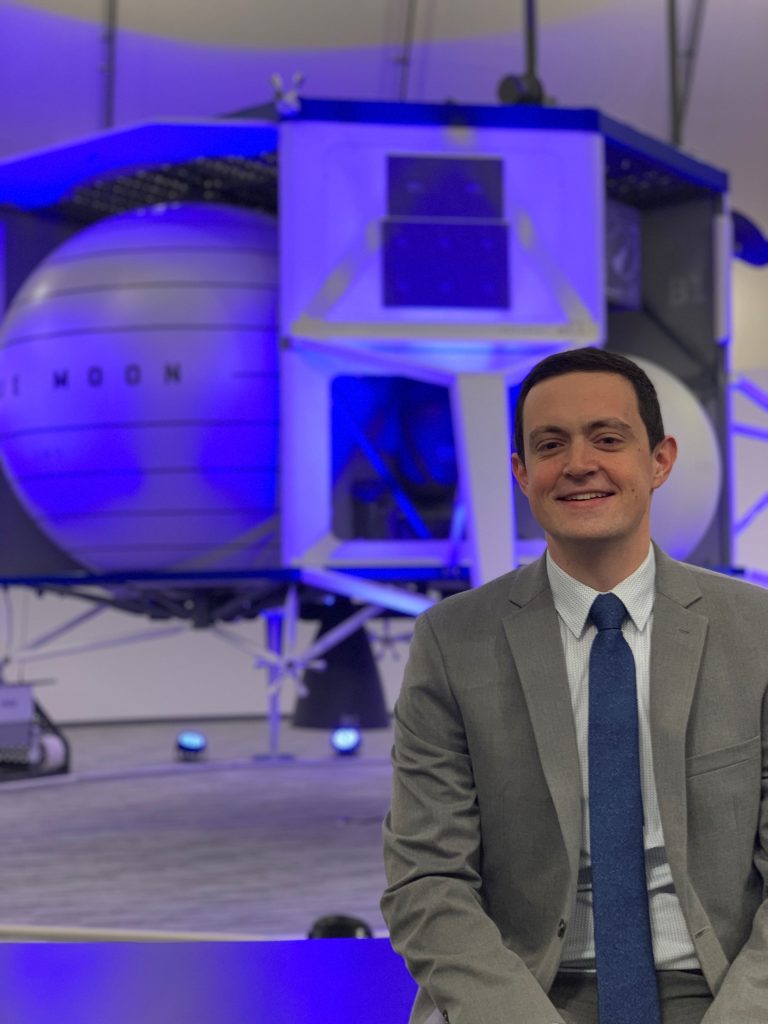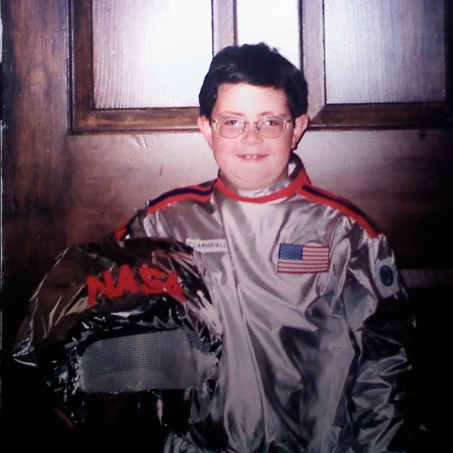How Jim Lampariello ’09 Is Bringing the Math He Learned at Regis to His Dream Job

Jim Lampariello ’09 has been obsessed with outer space for as long as he can remember. He was the six-year-old who dressed up as an astronaut for Halloween, the kid whose mom signed him up for summer classes on astronomy. So when he was a senior at Regis, trying to decide between a college aerospace program or a civil engineering one, he knew he had to pursue a career in the field that had fascinated him for so long.
Now, as a senior manager for mission design and ground navigation for Blue Origin, he’s living his childhood dream, tasked with leading a team responsible for getting spacecraft to the Moon.
“The best way to think of it is Google Maps for getting to the Moon,” said Lampariello. “When you get in your car and you turn on Google Maps and it says it'll take you 30 minutes to get here and turn right in a mile — we do that for the spacecraft.”
While completing his undergraduate studies at Notre Dame, Lampariello landed an internship at United Launch Alliance in Denver. That internship turned into an offer to work full-time after college, and he jumped at the opportunity, choosing to pursue a dual master’s in aerospace engineering and engineering management at the University of Colorado–Boulder while working at ULA.
When he left ULA for Blue Origin in 2017, he began working on a team that took a big-picture view of space exploration, anticipating what the next, next project for the company might look like. But over time, Lampariello moved into roles focused on the company’s efforts to launch spacecraft to the Moon. He now leads a team of 11 people tasked with designing the trajectory of two different kinds of spacecraft: a crew lander that will send people to the Moon and another that will carry cargo and experiments there.
“The way I describe it is like starting with a napkin sketch and then getting into details,” said Lampariello. “So when you're years out, you're doing the high level, let-me-make-a-bunch-ofassumptions calculations that make it easy to solve and get a quick answer. And then as you get closer and closer to launch, you start knocking down those assumptions.”

When Blue Origin is ready to launch these spacecraft to the Moon, Lampariello and his team will have an active role in the mission, deciding from mission control when they’ll need to burn their engines.
All of this requires expert knowledge of customized software that does trajectory optimization — and a lot of precise calculations. Lampariello credits Mr. Brendan MacDonnell P'16'20, who taught him for three out of four years at Regis, for giving him a strong base of math skills that set him up well for his professional life.
Mr. MacDonnell, for his part, remembers Lampariello as an enthusiastic learner who was eager to ask questions during and after class.
“As a student, Jim was definitely the kind of guy who was always interested in going below the surface,” he said. “When you go below the surface and tinker with why something is working, that's when you can innovate.”
Lampariello sees a direct line from his studies at Regis and the mission of the school to the work that he and so many other Regians in STEM fields are doing today.
“STEM fields tend to be the drivers for a lot of innovation,” said Lampariello. “To think like an engineer is to think systematically about how to solve a problem. What are ways I can make it better, and how do I implement that?”
He says that this mindset — using your talents to solve problems and help others — was instilled in him during his time at Regis. And he says he’s excited about the emphasis Regis is putting on STEM learning.
“It aligns very well with Regis’s mission,” he said. “You want to be a man for others. So if you see a problem, like how to get clean drinking water to a town that doesn't have it — that's an engineering mindset where you are making the world a better place. So I think emphasizing this kind of STEM mindset sets people up very well to do that kind of innovation and spread good in the world.”
This article appears in the Spring 2025 issue of Regis Magazine. To learn more about the future of STEM at Regis, click here.
Read more Regis news